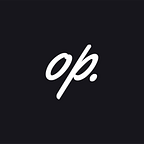My UX Design Journey (Foundation)
“Some people think design means how it looks. But of course, if you dig deeper, it’s really how it works.” — Steve Jobs
I wrote about how it all started, and where it all began for me. ICYMI you can always read it here. Grab your popcorn, and let’s do this again.
My UX Design Journey started with the Google UX Design Course on Coursera; this course is broken down into 7 different classes. Each of the 7 classes is broken down into 4–5 weeks depending on the course content; they all have interesting graded assignments. It is a really interactive course, and I’m enjoying it so far.
I’m halfway into course two, I’m going to quickly talk about everything (not everything) I learned and unlearned from the first course and my first month in the course. Andiamo! *cracks knuckles*.
Week one went by so fast but it had a lot of things to learn, lets start with the first question everyone asks, shall we? What is UX? UX is an acronym for User Experience and can be defined simply as how a user feels about interacting with or experiencing a product. Take a moment and think about everything around you and how you feel when you use them. Your spoon, clothes, shoes, and there you have it, the user experience.
UX design is the design of product to provide meaningful, relevant and seamless experience for users. Everything you use has been designed in a way to make life easier for you, the user, you probably have a lot of good UX design products around you, but if it’s not making life easier for you, it’s bad UX design. With this knowledge, you’re now something of a UX designer yourself.
Initially, I thought UX design was all about the internet and software applications (web and mobile), but I was wrong; in fact, the principles of user experience actually stretch back thousands of years, all the way to ancient China, where the practice of Feng Shui began. Practitioners believe that the arrangement of physical space, like how furniture is positioned in a room, could bring someone luck or improve their health and happiness.
Another misconception I had about UX design was that it was all about visual design. Taking this course changed my mind and showed me that it’s more than just visual design. It is everywhere and it about caring and being curious about the user’s needs; asking many questions is what UX is all about. As an introvert who’d rather talk to himself, I thought this would be my Achilles heel, but that hasn’t been the case so far. I’m more excited about the thought of asking people about their pain points, understanding what needs to be done, and designing a solution. It means a lot for me to be able to solve problems user(s) are facing regularly.
It was also taught that every product has a development lifecycle before it finally comes alive. This life cycle has five stages: brainstorm, define, design, test, and launch. This cycle is continuous for every product, and every step is essential; you might not know it, but you practice this sometimes or often; think about when you cook, you brainstorm when you consider what you want to eat, then you define the ingredients to suit your selected meal, the cooking process can also be called the design process, test and taste sounds pretty much the same to me (I don’t know about you), and voila you serve or launch your food. How is that for a product development lifecycle?
So, what makes a user experience a good one? What makes a product effective? How does one say this product is good? Is it the design, the interface, the structure, the simplicity, or functionality?
This answer is different for every product, but the main characteristics of a good UX are — usable, equitable, enjoyable, and useful. As taught in the course, if a product is easy to use — it is usable. If a product provides equity, then it is equitable, but what does that even mean? Equity means providing people with the tools to accomplish their goals and support improved quality of life. Equity goes beyond the concept of equality, where everyone is given equal resources because people often need different tools and support based on their needs. It is equitable if a product offers to be inclusive and helpful to people with diverse backgrounds without discrimination.
Think Tik-Tok, Instagram, YouTube, etc. They are apps that make you lose track of time because you enjoy them. This is what it means for a product to be enjoyable — they delight you and provide you with satisfaction. If a product serves your need adequately — it is useful. Food doesn’t help you well when you’re dehydrated; water is the valuable product you need at the time.
I also learned that there are a lot of opportunities in design, but being a generalist, I’m going to keep my options open and explore all. Got 98% on my assignment at first, but I retook it to get a 100%. Perfectionism is another problem I have.
…and It’s a wrap, I hope you enjoyed it. Whew! This is just week one, week two will be out soon, Anticipate!
